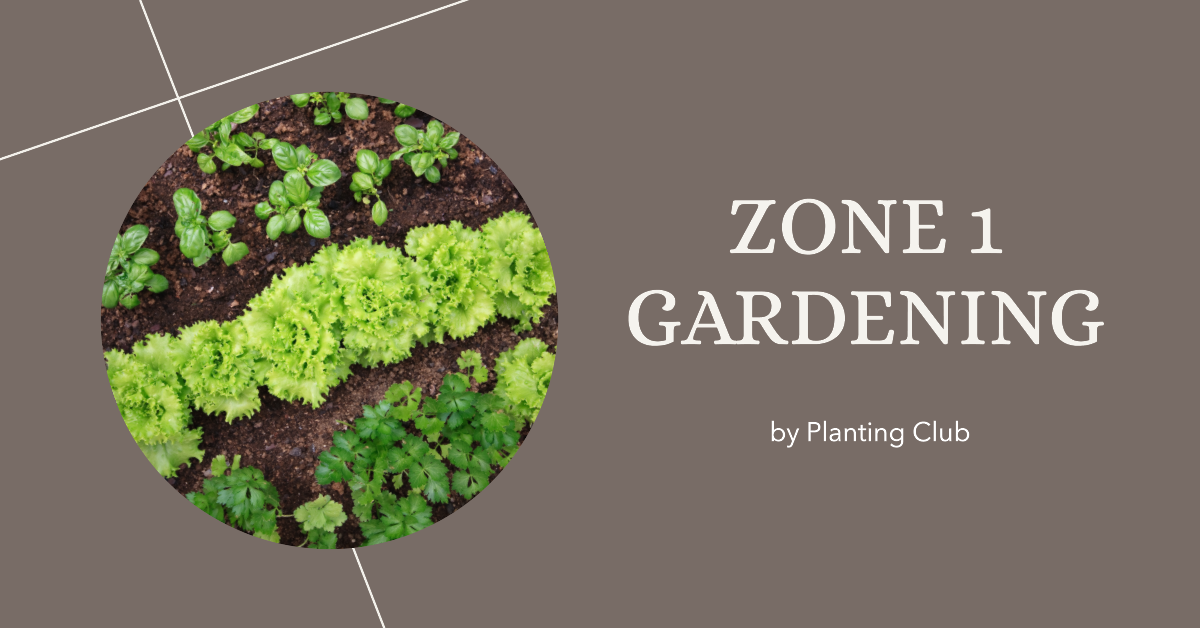Welcome to our guide on sustainable gardening tasks specifically tailored for Zone 1. Whether you’re a casual gardener or looking to dive deeper into your hobby, these tips will help you cultivate a thriving garden filled with vegetables, berries, and flowers in a chilly climate. We’ll show you how to use cold-hardy plants, season extension techniques, and other sustainable practices to make your garden flourish. Remember, each location has its unique conditions, so we’ll also discuss how to adapt these tips to suit your local environment.
When possible choose varieties that are known to work well in your area and have shorter harvest time.
Spring: A Time for Planting and Growth
- Plan your garden layout. Consider companion planting, which pairs plants that benefit each other, such as potatoes with beans or cabbage with onions. Include flowers like calendula and sweet alyssum to attract beneficial insects and repel pests.
- Start seeds indoors. Get a head start on your vegetable garden by starting seeds indoors, such as kale, cabbage, and Brussels sprouts. Transplant them outdoors after the last frost date.
- Prepare garden beds. Embrace the no-dig method by layering compost or organic matter on top of your soil. This helps retain moisture, suppress weeds, and improve soil health.
- Direct sow cool-season crops. Plant peas, spinach, arugula, and other cold-hardy crops directly into the soil.
- Install a cold frame or greenhouse. Extend your growing season and protect tender plants by using a cold frame or greenhouse.
Summer: Enjoying the Fruits of Your Labor
- Plant cold-hardy crops. Choose vegetables like potatoes, carrots, and kohlrabi that can withstand Zone 1’s chilly climate.
- Mulch your garden. Apply a layer of organic mulch, such as straw or compost, to retain moisture, suppress weeds, and regulate soil temperature.
- Harvest regularly. Enjoy the fruits of your labor by picking ripe produce. Regular harvesting encourages plants to produce more.
- Keep an eye on pests. Monitor your garden for pests and use organic or natural methods to control them.
- Water wisely. Water deeply and less frequently to encourage deep root growth and drought tolerance.
Fall: Preparing for Winter
- Plant cold-hardy crops. Sow cold-hardy crops like kale, collards, and turnips for a late fall harvest.
- Add compost. Refresh your garden beds with a layer of compost to replenish nutrients and improve soil structure.
- Plant cover crops. Sow cover crops like winter rye or hairy vetch to improve soil fertility, prevent erosion, and suppress weeds.
- Harvest and store. Pick the last of your summer produce and store or preserve it for the winter months.
- Clean up garden debris. Remove spent plants and weeds to reduce the risk of pests and diseases overwintering in your garden.
Winter: Rest and Reflection
- Prune dormant plants. Trim back fruit trees, berry bushes, and perennial plants to promote healthy growth in the spring.
- Plan next year’s garden. Reflect on this year’s successes and challenges, and start planning your garden for the following season.
- Feed the birds. Set up bird feeders to support local wildlife and encourage beneficial birds to visit your garden.
- Protect tender plants. Cover perennials and sensitive plants with mulch or frost protection to help them survive the cold months.
Maximize Your Zone 1 Garden Space
Vertical Gardening
Utilize vertical space by growing vining crops like beans, peas, and cucumbers on trellises, or plant tall plants like sunflowers to create a living wall. This not only maximizes space but also adds visual interest to your garden.
Greenhouse Gardening
A greenhouse provides a controlled environment that allows you to extend the growing season and grow a wider variety of plants in Zone 1. Some additional crops that can be grown in a greenhouse include:
- Tomatoes
- Peppers
- Eggplant
- Cucumbers
- Melons
- Squash
- Herbs
- Lettuce and other leafy greens
- Root vegetables
- Strawberries
- Citrus fruits (in a heated greenhouse)
- Grapes
Remember to provide proper ventilation, lighting, and temperature control to ensure your greenhouse crops thrive. By growing a diverse selection of crops in your greenhouse, you can enjoy a wide variety of fresh produce year-round, even in the challenging climate of Zone 1.
Use this guide as a starting point, and adapt the tips to suit your local climate and conditions. With some planning and effort, you’ll be on your way to a thriving, sustainable garden in Zone 1. Happy gardening!
Join Our Gardening Newsletter for More Tips
If you enjoyed reading this, don’t hesitate to subscribe to our newsletter for a wealth of gardening knowledge and insights. Stay up-to-date on the latest gardening trends, tips, and know-how, and make your green thumb even greener.



